In a special type of blog, here is a review I’ve created of the Martin Scorsese movie Killers of the Flower Moon, which came out in 2023 and stars Leonardo DiCaprio, Robert De Niro and Lily Gladstone.
Blog
-
The history of filmmaking – International inventions
In 1891, the Kinetoscope (pictured below) was invented by W.K.L. Dickson, who obtained Eastman film stock, cut it into 1-inch-wide (~35mm) strips and punched four holes on either side of the frames so that toothed gears would pull the film through the Kinetograph camera and Kinetoscope. Viewers put a coin in a slot to view the film. The invention was patented by Thomas Edison.
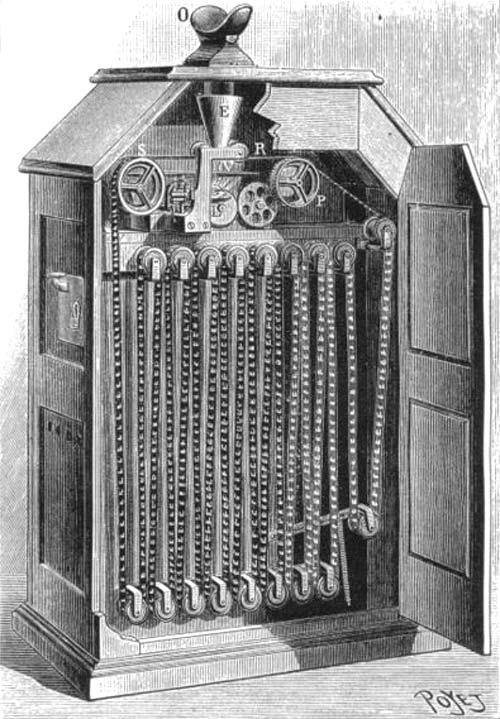
Since the invention of the Kinetoscope, the 35mm film stock with 4 perforations each frame became the standard. The Lumière brothers Louis and Auguste designed the Cinématographe in 1894 (pictured below). It used 35mm film and an intermittent mechanism like what is used in a sewing machine. The camera printed the positive copies and then, when mounted in front of a magic lantern, was used to project as well. They shot their films at 16 frames per second rather than the 46 frames Edison used, and this became the standard throughout the silent era.
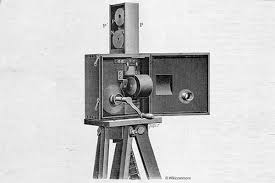
In 1894, Herman Casler patented the Mutoscope (pictured below). This was a penny-in-the-slot machine where the viewers turned a crank to view a series of photographs on a rotating drum. He needed a camera and went to W.K.L. Dickson for assistance. They, along with other partners, formed the American Mutoscope Company. By 1896, Casler and Dickson had a camera, but they decided to focus on projection (as the peepshow market was in decline by this point). They then made films and had programs at theatres and vaudeville shows around the country.
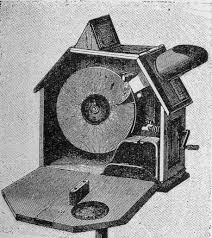
-
The history of filmmaking – The major stepping stones
In 1878, Eadweard Muybridge set up a row of 12 cameras to photograph a horse in motion. Each camera made an exposure in 1/1000th of a second and recorded half-second intervals of motion. Later, he made a lantern to project images of horses in motion, but those were drawings copied from his photographs. Pictured below are some later photographs of his from 1887.
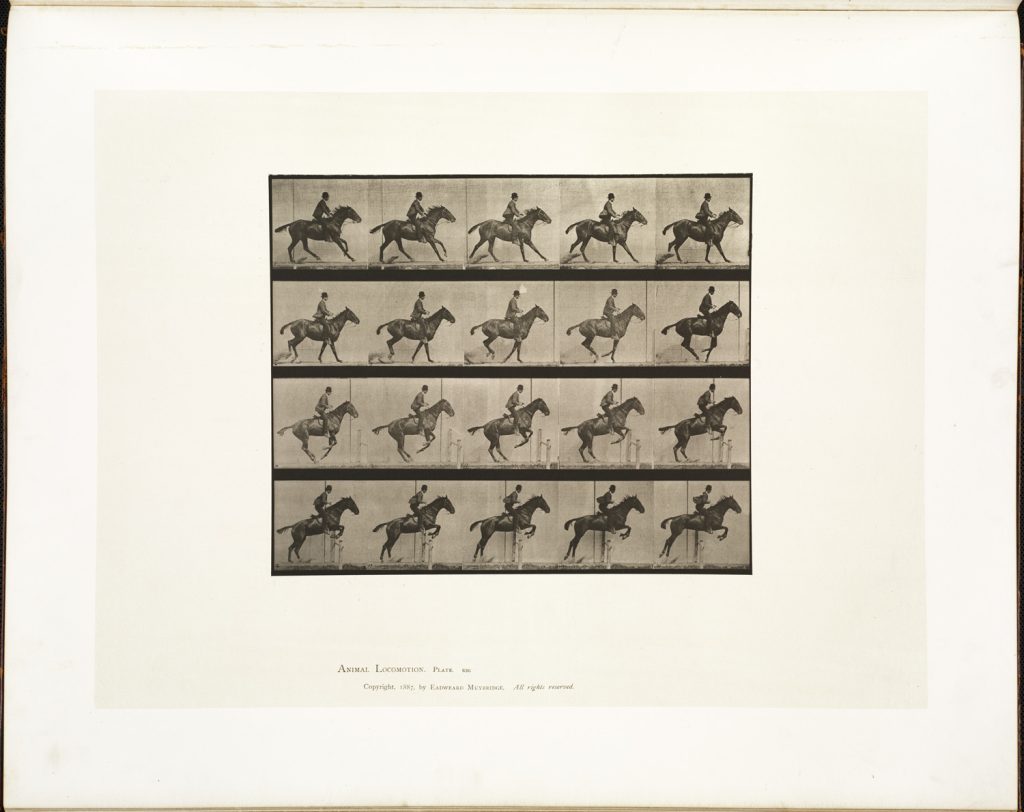
In 1882, Étienne Jules Marey used a photographic gun to explore rapid aanimal movements such as birds in flight. It was a rifle-shaped camera that exposed 12 images around the edge of a circular glass plate that spun around once per second. Later, in 1888, he built a box-shaped camera that used an intermittent mechanism to take multiple photographs on a paper film strip at a maximum speed of 120 frames per second, making him the first to combine flexible film stock ande an intermittent mechanism.
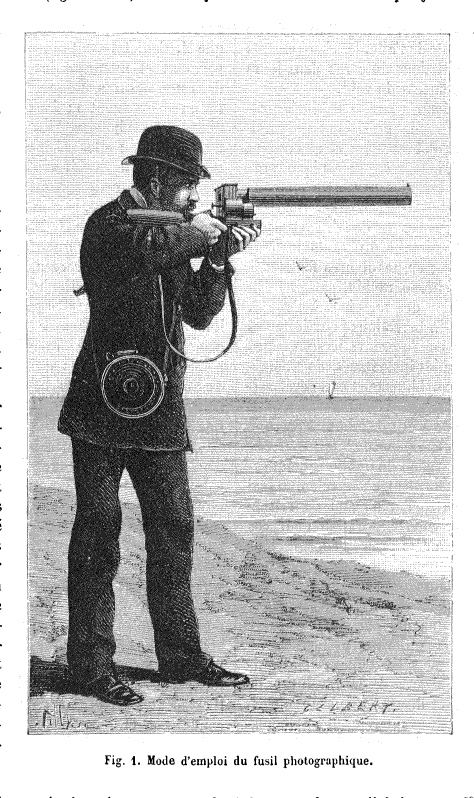
Émile Reynaud built an optical toy called the Projecting Praxinoscope in 1877. It was a spinning drum like the Zoetrope, but the viewers saw the images in a series of mirrors instead of slot. In 1882, he used mirrors and lantern to project a small series of drawings onto a screen. Starting in 1892, he gave regular public exhibitions with long, broad strips of hand-painted frames, but these looked clunky on the screen, giving a jerky and slow effect. The bands of film also couldn’t easiluy be reproduced and in 1895 he began using a camera to make his Praxinoscope films to make strips of photographs. By 1900, he was out of business because of the competition and he destroyed his machines out of despair, though there have been recent reconstructions.
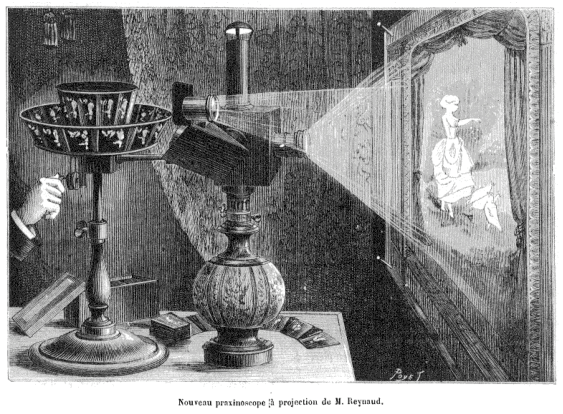
In 1888, Augustin Le Prince, while in England, made some brief films shot at ~16 frames per second using Kodaks paper roll film. However, he lacked flexible celluloid to project the images and was unable to make a suitable projector. He disappeared in 1890 while in France, along with his patent applications and as a result, his camera was never exploited commercially and made no impact.
-
The history of filmmaking – Early inventions
In the early days before the invention of motion pictures as we know them, scientists were making discoveries about the perception of motion. They discovered that the human eye will perceive motion if a rapid succession of similar images is displayed (at a minimum of around 16 per second). Many optical toys were marketed after this discovery, including:
- Belgian physicist Joseph Plateau and Austrian geometry professor Simon Stampfer’s Phenakistoscope (invented in 1832). In this invention, a viewer looks through a slot at a spinning disc with pictures.
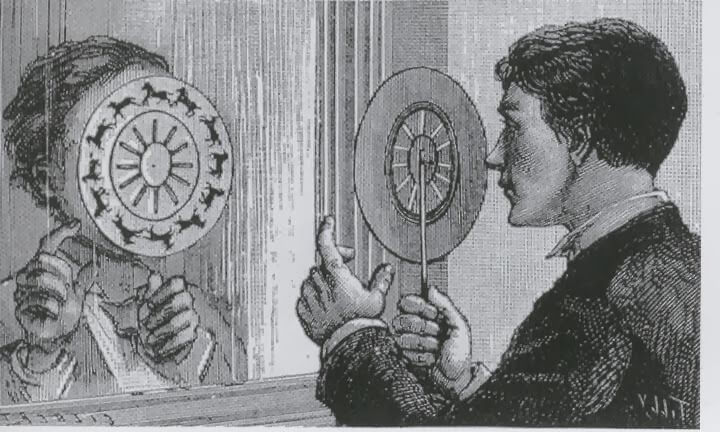
- The Zoetrope (invented in 1833). In this invention, users look through the slots at a series of drawings on a strip of paper inside a spinning drum.
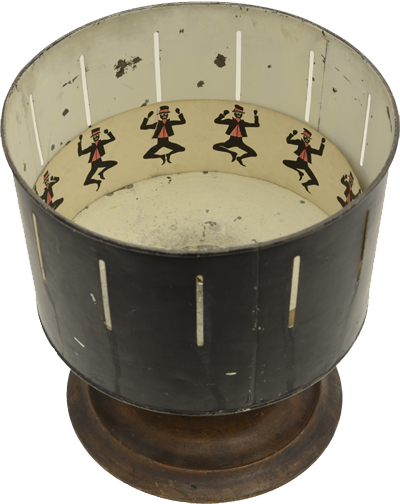
Proper projectors then had to be invented to project a rapid succession of images onto a surface. Magic lanterns had previously been used to project glass and lantern slides, but there was not yet a way to project a rapid series of images in succession.
Photographers then had to experiment with making successive pictures on a clear surface. Claude Niépce created the first still photograph (pictured below), but it was made on a glass plate and needed an 8-hour exposure time.
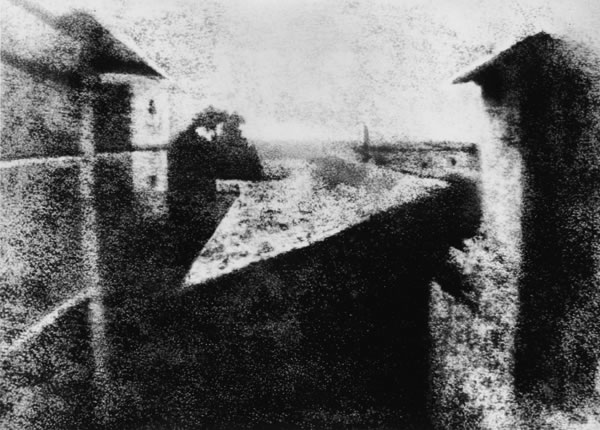
Henry Fox Talbot was the first to create negatives on paper (pictured below) in 1839 and it was around this time that printing photographic images onto glass lantern slides and projecting them became possible (though it wasn’t until 1878 that split-second exposure times were possible).
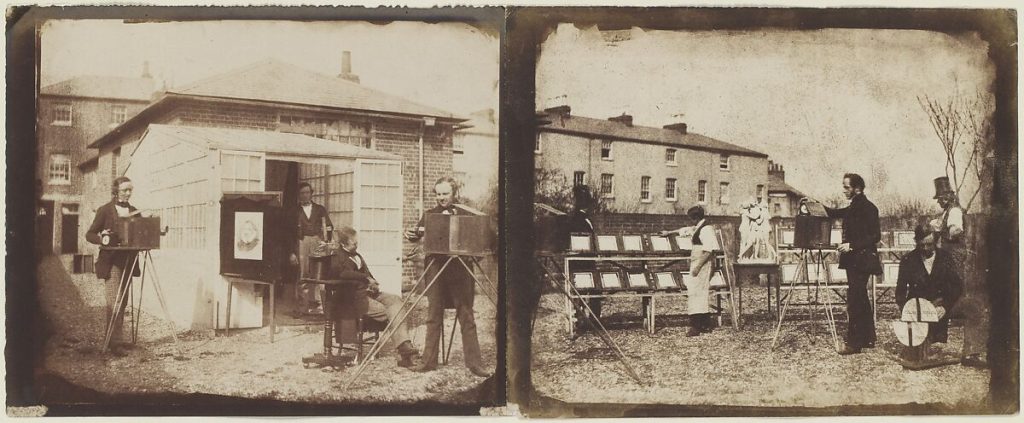
Photographs also needed to be passed through the camera rapidly on a flexible base. George Eastman made a still camera (the Kodak, pictured below) that created photographs on sensitised rolls of paper in 1888. He then introduced celluloid roll film the following year.
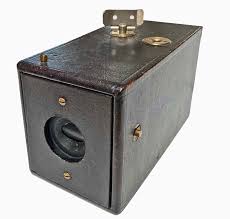
Experimenters then also needed to create a suitable intermittent mechanism for filming and projecting. The film needs to be repeatedly stopped for a split-second exposure and then covered with a shutter as the next frame is moved into place to avoid blur. This was the final step in creating motion pictures.